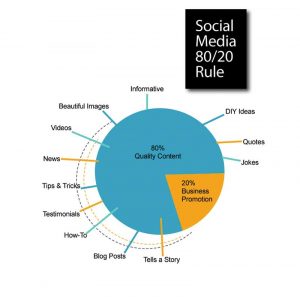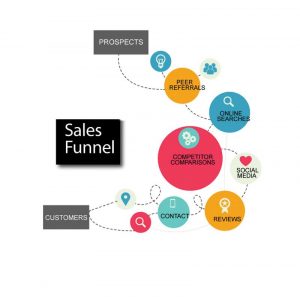Social Media 101: How businesses can use these platforms successfully
by | 20 May 2020 4:16 pm
 [1]
[1]By Crystal Lengua
Using social media marketing as a business tool is no longer an option. Whether social platforms are managed in-house or a third-party communication sub-contractor is used, it is important for the business to be present in this space.
The sign industry has an undeniable advantage when it comes to social sharing as its projects appeal to the masses and deliver quintessential content—not to mention installation videos, before and after project visuals, and so much more. Social media marketing also provides businesses with quantifiable data that can help shape their marketing and advertising efforts through (mostly free) analytics and digital insights that are readily available on all social platforms.
Some benefits of social media marketing for business include:
- Increased exposure/brand awareness.
- Marketplace insights and consumer purchasing data.
- Search engine optimization (SEO).
- Increased inbound website traffic (which is how sales are increased).
- Higher sales conversion rates (this means taking the time to develop long-lasting relationships with consumers can show positive results in sales).
- Industry and consumer perception (i.e. the business becomes an information hub).
- Competitive analysis/research.
- Cost-effective advertising with audience targeting capabilities.
- Communication and feedback.
- Recruitment for employment.
The main social platforms for business are Facebook, Twitter, Instagram, YouTube, Pinterest, and LinkedIn. Being active on all these can be beneficial, but only if a business has the resources to stay active on all of them. If a business does not have the time or content to post frequently, it runs the risk of appearing indolent or unsuccessful. In fact, it may even appear as though a company is out of business.
Remember, social media is a communication and conversation tool; therefore, it is a good idea to practice the 80/20 rule. Eighty per cent of all posts should be industry related and beneficial for the business’s audience, while the remaining 20 per cent can be used to promote the business. Few people will stay engaged with a brand that is constantly pushing purchases on them—people want information that is beneficial, interesting, and meshes with their lifestyle.
The following is a guide to some of the most popular social media platforms. Some of the biggest advantages and disadvantages are highlighted, along with some tips on how to use these platforms successfully.
 [2]
[2]Undoubtedly, Facebook is the most popular and useful social media platform out there. A business can share photos, blog posts, live video, links, and target its posts so there is a better chance of reaching the intended audience.
Advantages
- Facebook Live is a great way to show off the final step of a sign installation or it can be used as a method to train employees if a business operates multiple locations, or in different regions, and cannot get all of its staff together for a demonstration. For instance, a live feed showing the fabrication of a unique sign or its installation can be broadcasted, while at the same time answering any questions viewers may have in the live feed chat.
- Targeted ads allow a business to use its marketing money wisely. Audiences can be targeted by selecting their interests via keywords, age range, location, relationship status, education, workplace, job titles, and more.
- Facebook Messenger equips businesses with a real-time, chat-bot shopping experience (free of charge).
- Facebook has been working on a project called ‘Spaces’ that is designed to allow friends to connect in a virtual reality (VR) setting. People will create avatars of themselves and be able to interact with friends, strangers, and businesses. Stay ahead of the game by incorporating this platform.
Disadvantages
- The algorithm is set in such a way that organic reach is practically non-existent for business pages, so it is important to ensure the content posted is shareable and beneficial to the business’s audience so they ‘like’ and promote the post by sharing it with their followers. In turn, this increases the reach organically.
- Facebook is an oversaturated platform for ads; therefore, it is important that a business’s campaign is worthy of attention and a budget is set to pay for its promotion.
- Targeted ads could become costly depending on the business’s reach criteria and frequency of promoted posts.
Tip: When targeting an audience, it helps to create an ideal customer persona (or a few) to visualize who the message is speaking to—in addition to selecting keywords that are not necessarily that of the sign industry, but are
in tune with the needs of the client.
 [3]
[3]Twitter failed to grow followers significantly in 2017. This is not to say it is not an important social tool, as it is still one of the key players in a social media strategy. Businesses with rich content to share benefit most from Twitter’s fast-paced, news-based feed.
Advantages
- Like Facebook, Twitter drives traffic to a business’s website through URL links a company provides. Interest in certain products or services can be gauged by using vanity URLs to track visitors easily through Google analytics.
- Twitter is a fast-paced content social site. A business can post very frequently on this platform and re-use content regularly.
- Brands can also be humanized with quick replies, retweeting other people’s posts, and creating a community to share relatable and interesting project images.
Disadvantages
- Twitter users expect businesses to be responsive and address their concerns immediately. If a company lacks the capacity to react quickly on Twitter, it may end up on the receiving end of a number of complaints.
- Putting the wrong employee in charge of the business’s Twitter account can end up being a public relations mess.
Tip: Despite the increased character count on posts (tweets), from 140 to 280, it is still important to write eye-catching subject lines. Further, remember tweets with visuals get two times more engagement than those without, so share pictures and videos.
 [4]
[4]Instagram is currently the fastest growing social network, having gone from 600 million to 800 million active users in the past 12 months. It has had an impact on the way businesses function and Instagram says companies will seek to capitalize on this engagement by using social media to drive direct sales outcomes.
Advantages
- Instagram is hashtag focused, which means custom hashtags can be created for any specific marketing campaign or any product a business wants to promote. Users can follow hashtags as well as accounts, which mean hashtags like #signrestoration are now available in user’s feeds. By using a hashtag on ads such as the business’s location (e.g. city) will allow it to be found when users follow the city.
- Instagram ‘Stories’ is an option that allows users to share photos and videos that disappear after 24 hours. When a live story is posted, the business’s followers are notified via an alert. Showing a day in the life of a sign installer or a day at the office can be great ways to humanize a brand and give followers an inside look.
- Instagram has great built-in editing apps to take a video or photo to the next level.
Disadvantages
- Instagram is strictly mobile; a desktop option is not available. A mobile-based browser interface is available, but it lacks editing capabilities such as filters, publishing live, and stories, which are all popular features of the app.
- Like Instagram’s parent company, Facebook, organic posts have taken a huge hit. If smaller businesses want to stay relevant on Instagram they must post frequently, run aggressive ad campaigns, and boost more posts.
- Clickable links cannot be placed in posts unless a business runs an ad or promotes the post. The audience must be directed to a live link in the profile bio.
Tip: Create a contest using a unique #hashtag and then share audience pictures. People love recognition. Whether it is a sign competition, a unique project installation, or simply a design idea, include the Instagram community in the business’s social strategy. Also, ensure the business profile is set to public, not private. If the business account is set to private, it will limit the organic reach. Hashtags used in private accounts are not visible to the general public.
 [5]
[5]YouTube
Video marketing is conquering the world of digital advertising. YouTube provides a cost-effective dissemination strategy and its reach is far more comprehensive than regular television and cable stations.
Advantages
- Google owns YouTube, so video content is ranked according to sophisticated machine-learning algorithms.
- Videos can be categorized to create an informative series, or collection, for viewers to follow.
- YouTube also offers users live video streaming functionality.
Disadvantages
- YouTube does not offer much flexibility in the ability to customize videos prior to posting them.
- Creating video content can be time consuming and there is no guarantee a video will amass viral popularity.
- Users have no control over what related videos are displayed on the right side of the screen when they are being viewed, which means they can be videos posted by the competition.
Tip: When creating a video to post on YouTube, act natural. Avoid reading from a script and do not forget to breathe. Making a video can be intimidating; if someone is not up for being in the spotlight, make sure someone who is represents the business.
 [6]
[6]Pinterest is a social media platform where users ‘pin’ shareable images and ideas to their boards. Users can select any photo that inspires them and arrange them on their profile. Perhaps even a company’s blog post on sign installation tips, for example.
Pinterest boards can be created for a variety of areas of interest such as a digital signage board highlighting the latest equipment, a vehicle wrap board, a wide-format printing board, etc. All of these boards can consist of multiple ‘pins’ of images, equipment, and blog posts.
Advantages
- Businesses can use Pinterest to stay on top of consumer trends.
- Pinterest is not as conversation-focused as other platforms. Users simply follow boards and re-pin images. It can be a more relaxing platform compared to other social media sites where some may feel pressured to stay involved.
- Pins are easily shared amongst the site and, like all other social platforms, access is provided to valuable user insights. This helps businesses determine which posts were the most successful.
Disadvantages
- Pins can spread all over the world very quickly; therefore, it may be difficult for a client to hire a specific sign shop if the business is not local.
- As a social media marketer, a business will rely on social media management applications to assist with the planning and execution of its posts. Pinterest for business only offers basic scheduling and tracking options, however.
Tip: Keep content client-focused and avoid promotional pins. People do not want a company’s sales pitch to be constantly in their faces; therefore, create images/pins that catch pinners’ eyes and invite them to include the company’s pins on their board. A company can brand its images with a watermark, if necessary, but do not make the sales pitch obvious. A business is simply sharing what it has to offer that could complement its vision.
 [7]
[7]This social media platform is also known as ‘the grown-up platform.’ It is the business site and the place that professionals go to meet and build their network.
Advantages
- LinkedIn provides individuals the opportunity to highlight their professional background. This person can be an advocate for a company—the deeper their understanding and knowledge pool, the more credit the company receives. The same goes for the organization’s employees.
- It is populated almost entirely by professionals who are also looking for ways to help grow their business.
- Job opportunities in the sign industry are vast—from designers and fabricators to installers. Finding the right people is vital to the success of the industry and filling these positions can be problematic and costly. That said, LinkedIn dedicates a section of its platform to job-seekers. There is even a dedicated app available.
Disadvantages
- Not everyone is actively engaged on LinkedIn; therefore, some may find it takes longer to make connections than on other platforms.
- LinkedIn has a reputation for being a platform that involves more spam messages than other networks.
- Unless people have been endorsed by multiple reliable sources or have included information that can easily be confirmed, LinkedIn users cannot guarantee that someone has the experience they are claiming or is an expert in any regard. It is important to take time and practice due diligence prior to committing to any business agreement.
Tip: This is not the platform to post personal opinions. LinkedIn conversations should be business focused to ensure a professional reputation is maintained. Other people may discuss politics, religion, or social issues, but these sensitive topics should not be discussed on LinkedIn. If someone feels the need to express himself/herself in this manner he/she should use their personal Facebook account.
Content marketing strategy is and will continue to be at the heart of effective social media marketing. Dive in and test the waters, see what works and what does not and plan to make a series of engaging posts to impress clients.
Crystal Lengua is the director of sales and marketing at SMP Ultralift. A graduate of marketing, public relations and corporate communications, professional sales, social media marketing, and event management, she has positioned herself as a leader in digital and traditional marketing methods. Lengua’s social campaign creations have resulted in increased sales for B2B and B2C companies. She can be reached via email at c.lengua@smpmetal.com[8].
- [Image]: https://www.signmedia.ca/wp-content/uploads/2020/05/336896671.jpg
- [Image]: https://www.signmedia.ca/wp-content/uploads/2020/05/85319699.jpg
- [Image]: https://www.signmedia.ca/wp-content/uploads/2020/05/Social-Media-Rule-2018.jpg
- [Image]: https://www.signmedia.ca/wp-content/uploads/2020/05/sales-funnel-2018.jpg
- [Image]: https://www.signmedia.ca/wp-content/uploads/2020/05/188776792.jpg
- [Image]: https://www.signmedia.ca/wp-content/uploads/2020/05/InstaHashtag.jpg
- [Image]: https://www.signmedia.ca/wp-content/uploads/2020/05/285489574.jpg
- c.lengua@smpmetal.com: mailto:c.lengua@smpmetal.com
Source URL: https://www.signmedia.ca/social-media-101-how-businesses-can-use-these-platforms-successfully/